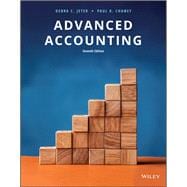Advanced Accounting delivers an in-depth, comprehensive introduction to advanced accounting theory and application, using actual business examples and relevant news stories to demonstrate how core principles translate into real-world business scenarios. Clearly defined and logically organized Learning Objectives aid in student comprehension, while highlighted Related Concepts illustrate how individual concepts fit into the larger picture. Short answer questions throughout the chapter allow students to test their knowledge before reaching the more in-depth end-of-chapter questions, promoting a deeper understanding of both technical and conceptual aspects of the field.
Written by active accounting researchers, this text brings clarity and flexibility to the central ideas underlying business combinations, consolidated financial statements, foreign currency transactions, partnerships, non-profit accounting and more. This new Seventh Edition has been updated to reflect the latest changes to FASB and GASB standards, allowing students to build a skill set based on up-to-date practices. With a student-oriented pedagogy designed to enhance comprehension, promote engagement, and build real-world understanding, this user-friendly book provides an essential foundation in current advanced accounting methods and standards.








